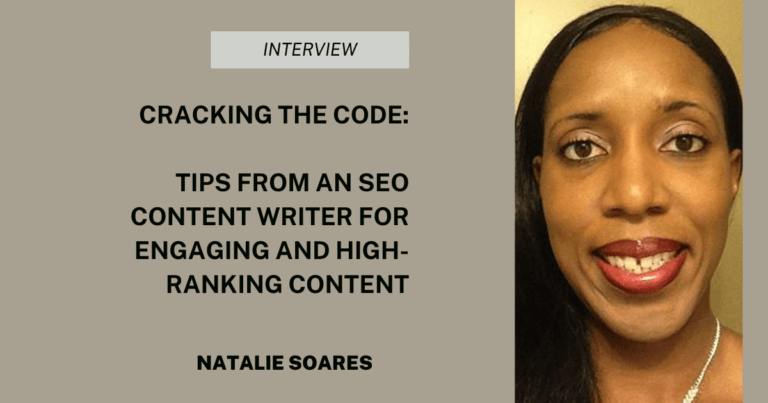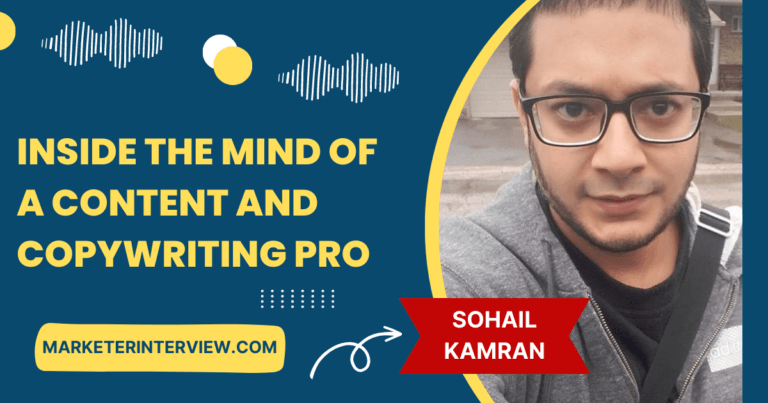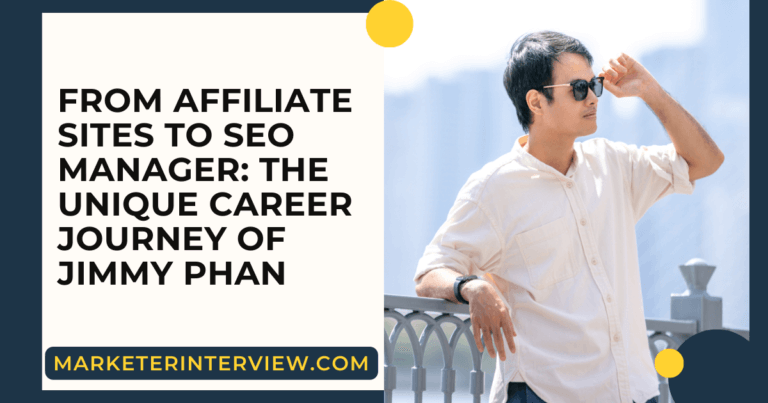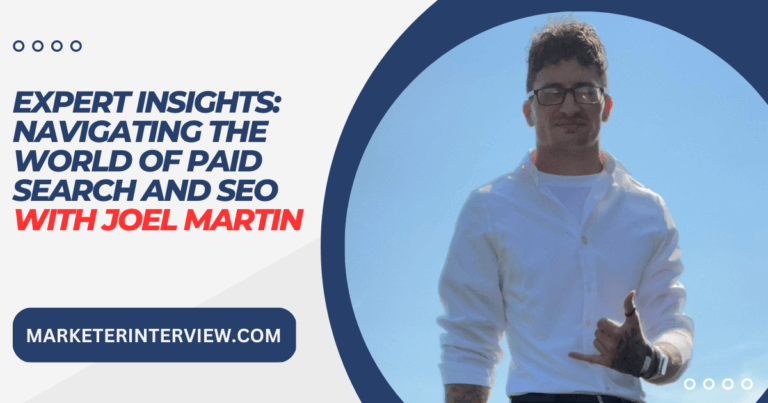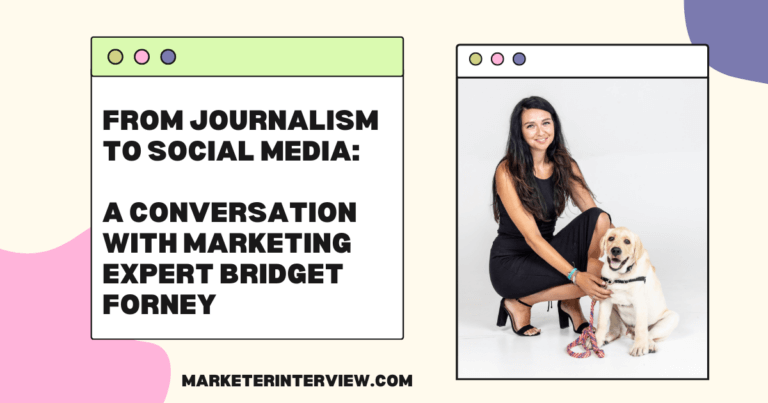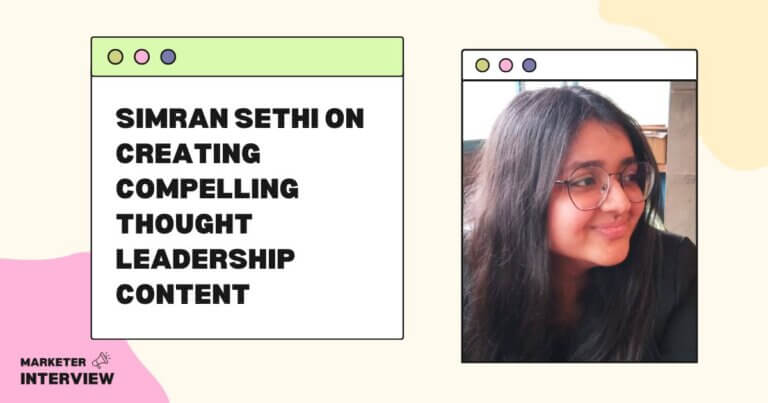Unveiling the Nexus: How Sara Bodner Masters SEO and Content Fusion
Welcome to another captivating edition of Marketer Interview!
Today, we have the privilege of delving into digital marketing and content strategy with a dynamic professional who thrives on the ever-changing landscape of search engine optimization.
Sara Bodner, the Digital Content Manager at 5K (formerly Conklin Media), brings a fresh perspective, blending her passion for creative problem-solving with her expertise in SEO.
From crafting engaging content to staying ahead in the SEO game, Sara has a wealth of insights to share. Join us as we explore her journey and glean valuable takeaways from her experiences.
Contents
- 1 Can you take us through your journey into the world of marketing and how you eventually found your way to Conklin Media?
- 2 Your role as a Digital Content Manager involves a blend of SEO and creative content. How do you harmonize these seemingly distinct aspects in your day-to-day tasks?
- 3 In the dynamic landscape of search engine optimization, what strategies do you employ to stay updated with the latest trends and algorithm changes?
- 4 Could you share a memorable instance where you developed a cutting-edge SEO strategy that significantly impacted your clients’ online visibility?
- 5 As a professional who thrives on creative solutions, can you share a challenging problem you encountered in your career and your innovative approach to solving it?
- 6 Content creation can be a demanding process. How do you balance meeting clients’ expectations and infusing your creative flair into the content?
- 7 With the vast array of tools and software available, could you highlight a few that are integral to your role and have proven effective in driving SEO and content success?
- 8 You mentioned your passion for helping people share their stories. How do you ensure that the diverse voices and narratives you work with are authentically represented in the content you create?
- 9 SEO is often associated with technical aspects, but your approach emphasizes a human touch. How do you bridge the gap between optimizing for search engines and creating content that resonates with real people?
- 10 Looking ahead, what do you envision as the next frontier in the ever-evolving realm of SEO and content, and how do you plan to leverage it in your role?
Can you take us through your journey into the world of marketing and how you eventually found your way to Conklin Media?
Like many people in digital marketing, I didn’t expect to end up in the industry!
I studied political science and international affairs and worked for nonprofits in Washington, D.C., and Cairo, Egypt. While in Egypt, one of my tasks was creating content for an organization’s website. I wanted to figure out how many people were going to the website and where they were coming from, which led me to set up and then figure out how to use Google Analytics. Once I saw all the opportunities to understand our audience and how they interacted with the site, I was immediately hooked.
When my term ended in Egypt, I returned to the US and started working for another local digital company, Conklin Media.
Your role as a Digital Content Manager involves a blend of SEO and creative content. How do you harmonize these seemingly distinct aspects in your day-to-day tasks?
I love that content and SEO have so much overlap at our agency!
There’s so much to be said for incorporating creative elements like voice, style, imagery, and more into your content that you want to rank. Otherwise, it’s rehashing the same things as all the other pages in the SERPs. Google’s well aware of this, too, and we’re already starting to see poor-quality content that doesn’t have a unique point of view or new information to add become less of a priority.
SEO content is different from email content and ad copy. When working on a wide range of content in one day, I keep separate blocks of time devoted to SEO work and writing that requires more creativity. I’ve found that I tend to be more creative and better at focusing on writing first thing in the morning, so I try to start with those types of projects.
In the dynamic landscape of search engine optimization, what strategies do you employ to stay updated with the latest trends and algorithm changes?
I love email newsletters, and they’re instrumental in helping me stay on top of the constant changes in the industry. My all-time favorites are SEOFOMO and Rich Snippets by Traffic Think Tank. I’m also part of the Women in Tech SEO community and have learned much from everyone there.
On the content side of things, the Superpath community is a great resource. No matter what specific sector or niche you’re in, once you find your people, it’s much easier to find out information quickly and to get excited about change and opportunities instead of feeling anxious.
I’m not sure I’d classify anything as “cutting edge” since best practices are more or less laid out for us. It’s a matter of figuring out what to prioritize, when, and how.
One of my clients, a jewelry store, had a page that took a hit after one of Google’s Helpful Content updates. They had good information on the page based on their experience, but we worked with them to incorporate specific anecdotes that genuinely reflected their authority. We also had them incorporate unique images they’d taken at their store that showed parts of the process that other stores didn’t.
While not particularly revolutionary, the focus on incorporating more stories and experience rather than just reworking it to look exactly like their competitors’ was a bit of a different strategy at that time, which paid off exponentially.
The most challenging times are when an SEO campaign doesn’t work like it should! It doesn’t happen often, but it’s very tough when it does.
When this happens, I first run a technical audit – sometimes, I catch something like a client changing a URL and not adding a redirect or uploading images without compressing them and tanking their Core Web Vitals.
If all the technical aspects seem in shape, I’ll look at internal links to the page and competitor pages to see if anything significant is missing.
SEO troubleshooting requires a lot of digging. Usually, there’s no easy answer. Instead, it could be a combination of things or just need a lot of trial and error.
Content creation can be a demanding process. How do you balance meeting clients’ expectations and infusing your creative flair into the content?
Working with clients is one of the more challenging aspects of my role.
It helps when I set expectations before even beginning. I tell clients right away that I can’t read their minds. If they have a specific vision, communicating it early in the process will ensure we’re on the same page. Because writing can be very personal to some clients, they’ll often make changes that aren’t helpful for SEO or conversions.
At that point, it’s crucial to talk about the end goal. I paint them two pictures: by using the properly optimized content, they’ll have more people finding their products or services. Of course, having them make all the changes they want is also an option. Still, I make it clear that, in my professional opinion, we won’t see the types of results they invested in services to achieve. We can’t be held accountable since it’s not our official recommendation. Usually, at that point, people start to reconsider.
Marketing is our specialty. The client has plenty of other outside teams they work with. If they brought in an accountant, for example, they wouldn’t commit to the retainer and not follow the advice they’re paying for. That just wouldn’t make sense!
Of course, getting clients to see you as that valued team member at the beginning is hard. Building trust in SEO and content is similar to other industries: it takes a lot of communication, proactivity, and time.
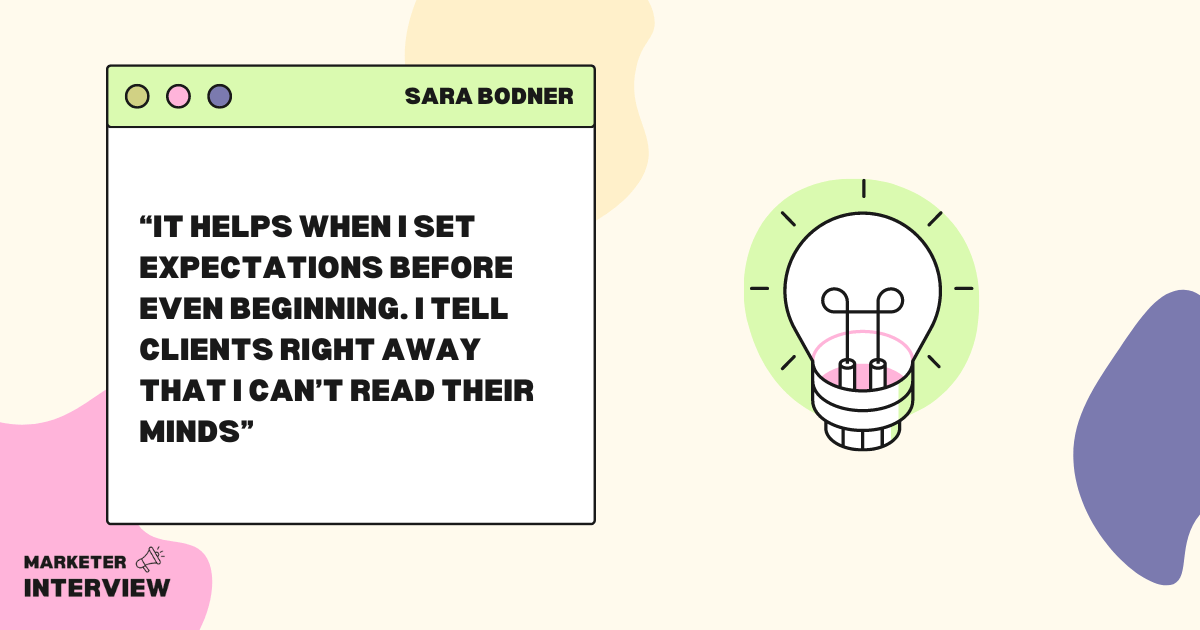
With the vast array of tools and software available, could you highlight a few that are integral to your role and have proven effective in driving SEO and content success?
I’m in Ahrefs every day, and it’s one of my favorites. Semrush is also a great option.
Another tool I use often is Surfer SEO. It’s a great way to check out competitors and find NLP keywords. Our company has also built an internal tool for optimizing content that allows us to upload lists of keywords from Ahrefs or Semrush, and it then combines them into every variation of long tail keywords.
When I’m sharing someone’s story, it’s a fine line between accepting their recommendations and replicating their voice while following best practices.
As much as I can, I try to stick to their tone and voice based on conversations I’ve had with them. Reading their writing and that of others in their industry is also helpful. Everyone has something unique to share. It’s just a matter of uncovering and developing it in a way that makes sense for their audience.
SEO is often associated with technical aspects, but your approach emphasizes a human touch. How do you bridge the gap between optimizing for search engines and creating content that resonates with real people?
Right, SEO content usually exists to turn people into customers, and people aren’t going to convert if they don’t feel understood or if the content reads like a keyword-stuffed cardboard cutout.
As you optimize your content, you need to make sure it’s appealing to real people and resonates deeply with them, ideally on an emotional level. And the only way to do this is to understand your audience like no one else can. Again, it’s all about finding the underlying emotions, their trigger words, their joys, and their frustrations.
Here are a few of my favorite ways to get the inside scoop on an audience:
Read their competitors’ negative reviews. Google Business Profiles are a gold mine! Find out what makes people hate that competing business, and then strive to create a business (and copy) that’s the exact opposite. How can you position yourself so people are excited to work with you?
Spend some time on forums or in Facebook groups. There’s a Facebook group for seemingly everything these days. Join some that your ideal audience would most likely be a part of, and then watch for their struggles and the exact language they use.
Talk to sales and customer services teams. As marketers, we’re often disconnected from the target audience by an extra degree or two. It’s like playing a game of telephone: you hear from the marketing manager, who might hear from the CEO… and then create content for the company instead of for the customer.
The best way to overcome this is to meet with those who directly communicate with customers or potential customers all day. They understand the target audience better than anyone and can let you know why people love the product or service and share the language they use.

Looking ahead, what do you envision as the next frontier in the ever-evolving realm of SEO and content, and how do you plan to leverage it in your role?
It’s an exciting (and a little scary) time to be in SEO! There’s so much change on the horizon, from generative search to people using AI to create content instantly.
The next biggest thing will be EEAT. Thanks to AI, anyone can generate content with essentially a click of a button, and Google knows this. Because of that, demonstrating your relevant experience and that you’re qualified to write about your niche will be crucial. Plenty of people have the credibility they need, but it will be crucial to showcase that correctly in a way that Google will understand.

